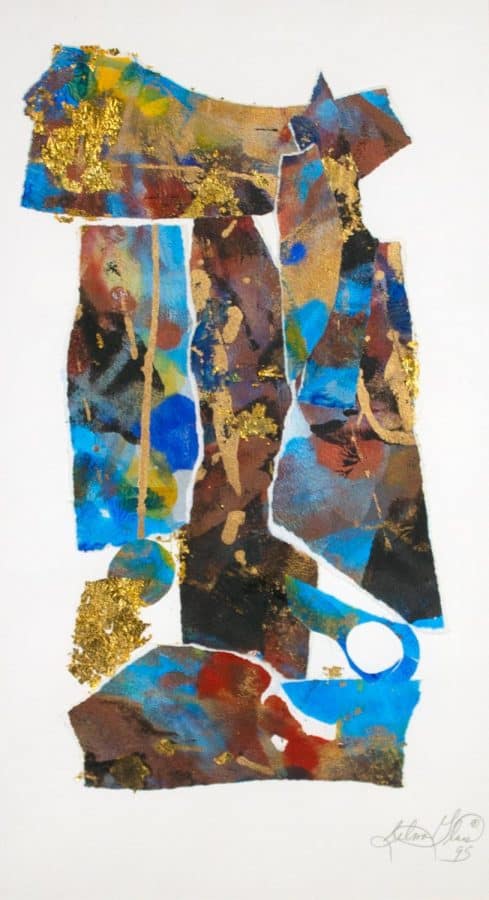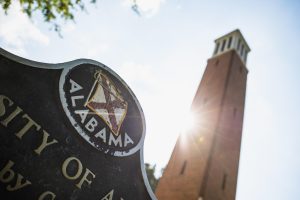Constructed Complexity exhibit highlights collage and assemblage art forms
Selma Glass, “Shades of Blue,” 1995, mixed media on paper, Paul R. Jones Collection of American Art at The University of Alabama, PJ2008.0249.
September 1, 2021
The Paul R. Jones Museum’s fall exhibit, “Constructed Complexity: Assemblage and Collage, features Amalia Amaki, Benny Andrews, Joy Ballard Peters, Hans Bhalla, Allan L. Edmunds, Selma Glass, Sam Gilliam, John T. Riddle Jr., Molly Brooke Threadgill and others.
Who: The exhibit is free and open to the public.
When: The exhibit is open from Friday, Aug. 6 to Friday, Sept. 24.
Where: The Paul R. Jones Museum.
Why: The exhibit shows off collages and assemblages in the museum’s collection.
Emily Bibb, the curator of the exhibit, has been curator of the Paul R. Jones Collection of American Art —one of the largest collections of 20th-century African American art in the world — for almost 10 years. In her time at the museum and in the gallery’s records, she could not find an exhibit done around the theme of assemblages or collages.
Bibb said the artists in the collection use well-known objects, like magazine clippings, cigar boxes, buttons and mass-produced textiles to produce pieces that create new meaning.
“I thought it was well past time that we featured those collections,” Bibb said. “Repurposing the familiar as raw material by altering, twisting, de- and reconstructing, these artists construct complex works of art layered with history and meaning. Using and reusing found materials, the artists create homages to family, history and domestic life.”
Collages and assemblages are plentiful in the Paul R. Jones collection, so Bibb went through a larger group of art to select the pieces that fit.
“Grouping these artworks together allows us to look at the similarities and differences in materials and technique, constructing a larger conversation about how artists conceptualize, interpret and reframe the world around them through their work,” Bibb said.
The Constructed Complexity exhibit’s purpose is to share the stories behind each piece while also showcasing art that includes the historical context, importance and impact of collage and assemblages as an art form.
“Collage, as an art form, was an early 20th-century invention. For perhaps the first time, artists were creating art using nontraditional materials and imagery,” said Daniel White, the director of the Paul R. Jones Museum. “Perhaps because of its ready accessibility as source material, or the freedom it allowed in expressing one’s ideas politically, the Harlem Renaissance benefited greatly from artists working in collage. ‘Constructed Complexity’ allows us the occasion to feature collage as the common thread in the presented work and showcase its importance as an art form.”





















